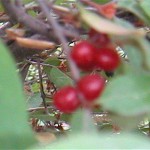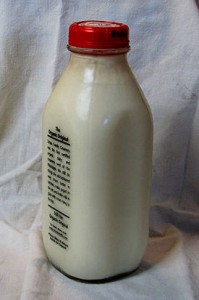by Catherine Haug
(Photos by C.Haug)
I have a section of my yard that has never been landscaped, and is full of native shrubs and flowers. The other day I noticed a shrub with berries that I had not noted before (though by its size, it has been there for many years). With the help of Brett T., it has been identified as Shepherdia canadensis or Canadian buffaloberry, which is also known as soapberry.
The Chinook name is Soopolallie (soapberry), and natives of the Pacific Northwest made a summertime sweet concoction called sxusem. From Wikipedia (2): (more…)


